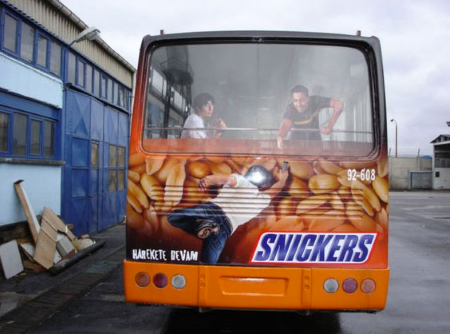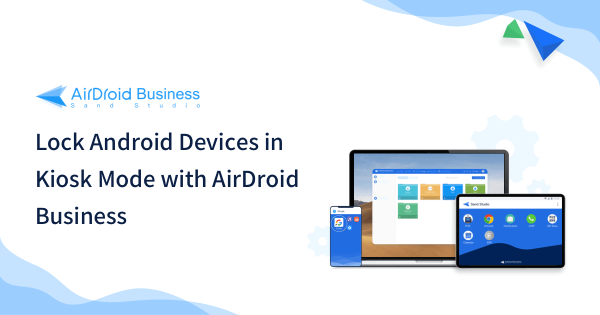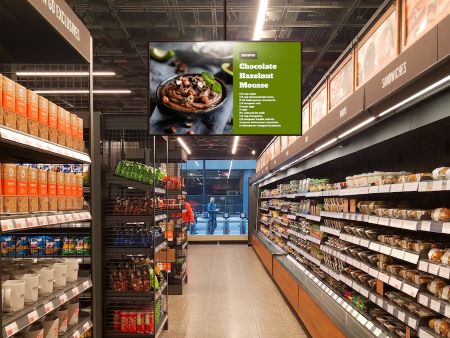[2023] Transform your ads strategy with retail digital signage
The last revolution in advertising was social media. Brands who were ahead on this trend gained numerous advantages: They amassed large followings, improved share of voice over competitors, and ultimately drove more online conversions.
Brands who are ahead on the next revolution in advertising will likewise gain strategic advantages. This shift is in the very nature of screens themselves: Signages and displays that were once static and printed are now becoming dynamic and digital.
These digital displays in retail are the answer to many of the ongoing problems facing the category today.
Part 1. Printed ads cannot target market segments
An advertisement on the back of a bus or in a mall corridor will be the same message to everyone. Unlike advertising in other channels, such as social media, it cannot be changed for different audiences. Because the message is fixed, it is naturally less appealing, especially vis-a-vis other channels.

(Source: Pinterest)
If consumers are already becoming accustomed to personalized, highly relevant ads on other channels, this kind of mass advertising will feel archaic. For the brand, it pretty much is. Without targeting, they are doing the equivalent of shouting to the crowd and hoping a few people listen.
Part 2. Even quality printed ads are forgettable
The vast majority of printed advertisements are ignored. They simply do not stick out from all the things in person’s visual field calling out for their attention. Even an advertisement that succeeds in doing so is soon forgotten.
At most, the person will laugh or smile. Compare this momentary reaction to the kind that people have with dynamic signages. Because they provide one-of-a-kind viewing experiences, viewers often record the experience for sharing on social media later.
This brand gets a much better engagement with the consumer, and they even amplify the message to their personal and professional network.
Part 3. Printed ads are difficult to monitor
There are numerous issues that can crop up with printed ads. The brand can mistakenly publish an ad that has a typo, error, or inaccurate information.
Once the ad is posted, it can be rendered unreadable by conditions in the environment, such as the weather. In some cases, people may deface the advertisement with graffiti.
Any one of these problems will be compounded by the fact that advertisements are difficult to monitor. In other words, the brand likely won’t find out about an issue until it is too late, such as when a passerby photos an embarrassing typo for sharing on social media.
It would of course be easy to manually monitor a handful of advertisements, but any brand that does printed advertising likely has hundreds if not thousands of touchpoints. There is no easy way to scale monitoring of their advertisements.
Part 4. How digital displays can build your brand?
Digital transformation of any enterprise that involves people, such as a department, is difficult. Organizations will need to train, upskill, and lead team members from the status quo to the new digital methods as part of a program of change management.
In sharp contrast, digital transformation of signages and displays is much easier. Brands just need to avail of the right technologies, and they can reinvent how they showcase their brand to the public.
Contrary to popular belief, brands do not only need the digital displays themselves. For these to be effective, brands must have an MDM through which they can manage all their digital screens in retail.
One such example is AirDroid Business, which is an MDM that is compatible with any signage or display powered by the popular Android operating system.

Adopting an MDM like AirDroid Business will lead to numerous benefits for brands
Brands can create and deliver unforgettable experiences with digital displays in retail:
It is hard for brand managers to imagine what can be done with dynamic and interactive displays until they see what other organizations have achieved. One representative example comes from the Dallas Cowboys, an American football team.
At their stadium, fans can walk up to a digital kiosk, choose their favorite players from the team, and then they will appear beside them, posing for a personalized picture.
This experience is of course unforgettable for most fans. They get to memorialize their trip to the game with photos incorporating the likeness of their favorite players. Most fans naturally take videos of the experience and share on social media.
The digital kiosk also provides fans with options to download and send themselves the content directly from the device.
No matter the industry, brands can create similarly memorable experiences for their customers through digital displays in retail. The benefit of having an MDM is that they can manage this content at scale.
Without one, brands would have to configure each device manually, such as by uploading a file from a USB. This process is of course cumbersome.
With an MDM’s bulk file management feature, there is no roadblock between a brand’s creativity and these touchpoints.
As soon as they develop an amazing concept for an advertisement, they can upload it and push it to all their signages and displays. This speed is particularly important for trendy or time-sensitive content that may not land as well if delayed.

AirDroid Business MDM for Reatail
Remotely manage, control, and troubleshoot all your retail devices with one MDM solution tailored for your business. Keep your POS machines, digital signage, self-service kiosks always up and running with timely IT support.
Brands can segment audiences with digital displays in retail
The best advertisements are targeted. The problem with printed advertisements is that they broadcast a universal message to everyone.
When paired with an MDM, targeting can easily be done on digital displays in retail environments. This is accomplished through logic that can be configured as granularly as the brand desires.
For example, a fashion company may want to display a digital ad that highlights a luxury item in market A, but a more accessible product in market B. Alternatively, a food company may want to change its storefront display across all stores in accordance with the time of day, whether breakfast, lunch, or dinner.
A fragrances company may want to display a women’s perfume in the female-only passenger car and a men’s cologne in the co-ed car.
As these examples show, brands can configure rules that improve targeting, including across markets, time of day, gender, and more. This segmentation may seem simplistic, but they go a long way toward improving engagement with an ad since it is tailored to their context.
A hungry person in the evening will more likely walk into an eatery dynamically advertising its dinner items than one still stuck showing the breakfast menu.
The segmentation that an MDM allows will require more work. Brands will have to think about their segmentation strategy, create the necessary content, and determine which ads will be delivered to which groups in their MDM. Such effort, however, will be well worth the investment, when advertisements achieve what they are supposed to: Get customers to buy their products, avail of their services, and stay loyal to the brand.
Brands can monitor their digital displays in retail in real-time
When brands open up kiosks and signages for interactivity, there are risks. Some users may input offensive content into the application on the device, which they may then use to lampoon the brand.
Others may try to jailbreak the application, so that it does not work as the brand intended. Still others may even try to hack the device in some way, such as by installing malware. There are many risks, in short, when brands open up touchpoints to the public.
An MDM like AirDroid Business can help brands mitigate if not entirely eliminate these risks. In the first place, IT teams can monitor their signages and displays from a single back-end. This is accomplished in real-time, so that they can fix any problems as they arise.
Additionally, this remote monitoring can be done at scale: A single team member can keep track of hundreds if not thousands of signs - a feat that would be impossible with manual media monitoring.

In addition, MDMs offer other features that make them safer to use. AirDroid Business, for example, has kiosk mode. With kiosk mode, brands can lock the device down to a single app. If users need website access, such as to send branded content to themselves, the organization can also whitelist particular URLs, such as those belonging to social media or email sites. With these features, users can safely interact with the display or kiosk, and only in the way that the brand intended.
Through kiosk mode, the look and feel of the display is also customizable. Brands can change the layout, wallpaper, and logo. While these may seem like small touches, they add to the user’s experience: Because the brand’s visual identity is consistent, they can associate the interactive experience with the organization.
The organization, in turn, gains brand equity, which will only increase further if the happy user photos or videos the kiosk for social media.
Part 5. Start your brand’s transformation today
It’s the twenty-first century. A brand’s signages and displays should not look the same as they were fifty years ago. These touchpoints must be brought into the digital age. While availing of digital signages and displays is the first step, this ecosystem must be managed through an MDM like AirDroid Business.
Pairing dynamic displays with AirDroid Business MDM will confer incredible advantages to the brand. For their customers, they will be able to create unforgettable experiences that are often interactive and personalized. Brands will also be able to deliver this content in a targeted manner, given that an MDM can facilitate segmentation by market, geography, or some other attribute.
Finally, the kiosk mode feature ensures that the experience is untainted: Users will get to interact with the signage or display only in the way that the brand intended. In short, when a brand makes their signages and displays interactive, they build a two-way relationship with their customers - one that is more likely to stand the test of time.






Leave a Reply.